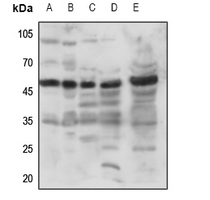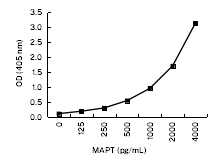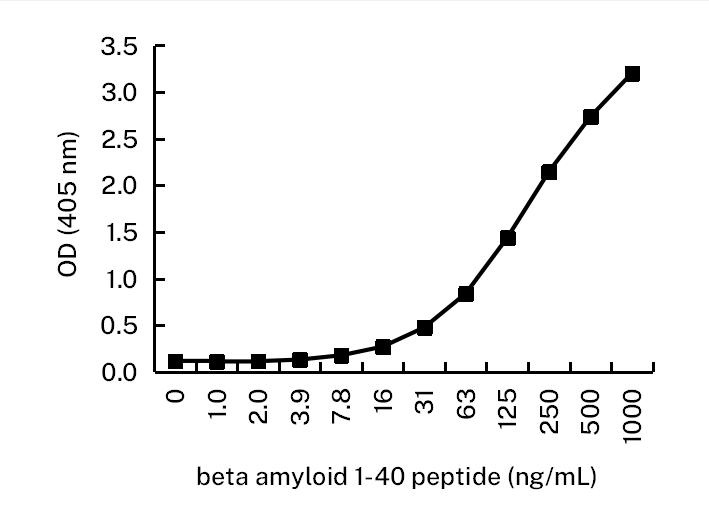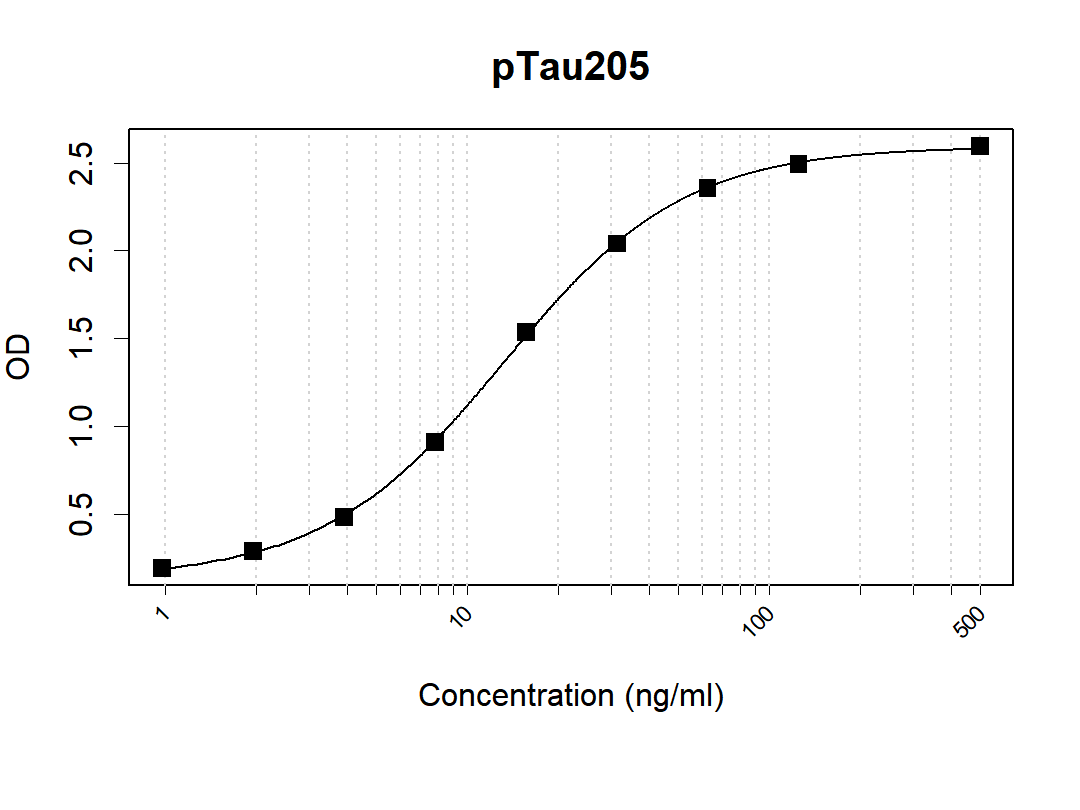Human CD279 / PD-1 ELISA Kit
CAT.NO. : ARG82957
US$ Please choose
US$ Please choose
Size:
Trail, Bulk size or Custom requests Please contact us
*产品价格可能会有所调整,请以品牌方官网实时更新的价格为准,以确保准确性。
概述
| 产品描述 | ARG82957 Human CD279 / PD-1 ELISA Kitis an Enzyme Immunoassay kit for the quantification of Human CD279 / PD-1 in serum, plasma and cell culture supernatants. |
|---|---|
| 反应物种 | Hu |
| 应用 | ELISA |
| 靶点名称 | CD279 / PD-1 |
| 偶联标记 | HRP |
| 偶联标记说明 | Substrate: TMB and read at 450 nm. |
| Protein Full name | Programmed cell death protein 1 |
| 灵敏度 | 78 pg/ml |
| 样品类型 | Serum, plasma and cell culture supernatants. |
| 标准范围 | 156.3 - 10000 pg/ml |
| 样本量 | 100 μl |
| 精确 | Intra-Assay CV: less than 10% Inter-Assay CV: less than 10% |
| 別名 | hPD-l; CD279; PD-1; Protein PD-1; CD antigen CD279; PD1; hSLE1; SLEB2; Programmed cell death protein 1; hPD-1 |
应用说明
| 检测时间 | ~ 3.5 hours |
|---|
属性
| 形式 | 96 well |
|---|---|
| 存放说明 | Store the kit at 4°C. Keep microplate wells sealed in a dry bag with desiccants. Do not expose test reagents to heat, sun or strong light during storage and usage. Please refer to the product user manual for detail temperatures of the components. |
| 注意事项 | For laboratory research only, not for drug, diagnostic or other use. |
生物信息
| 数据库连接 | |
|---|---|
| 基因名称 | PDCD1 |
| 全名 | programmed cell death 1 |
| 背景介绍 | CD279 / PD-1 is a cell surface membrane protein of the immunoglobulin superfamily. This protein is expressed in pro-B-cells and is thought to play a role in their differentiation. In mice, expression of this gene is induced in the thymus when anti-CD3 antibodies are injected and large numbers of thymocytes undergo apoptosis. Mice deficient for this gene bred on a BALB/c background developed dilated cardiomyopathy and died from congestive heart failure. These studies suggest that this gene product may also be important in T cell function and contribute to the prevention of autoimmune diseases. [provided by RefSeq, Jul 2008] |
| 生物功能 | CD279 / PD-1 is an inhibitory receptor on antigen activated T-cells. It plays a critical role in induction and maintenance of immune tolerance to self (PubMed:21276005). Delivers inhibitory signals upon binding to ligands CD274/PDCD1L1 and CD273/PDCD1LG2 (PubMed:21276005). Following T-cell receptor (TCR) engagement, PDCD1 associates with CD3-TCR in the immunological synapse and directly inhibits T-cell activation. Suppresses T-cell activation through the recruitment of PTPN11/SHP-2: following ligand-binding, PDCD1 is phosphorylated within the ITSM motif, leading to the recruitment of the protein tyrosine phosphatase PTPN11/SHP-2 that mediates dephosphorylation of key TCR proximal signaling molecules, such as ZAP70, PRKCQ/PKCtheta and CD247/CD3zeta. The PDCD1-mediated inhibitory pathway is exploited by tumors to attenuate anti-tumor immunity and escape destruction by the immune system, thereby facilitating tumor survival (PubMed:28951311). The interaction with CD274/PDCD1L1 inhibits cytotoxic T lymphocytes (CTLs) effector function (PubMed:28951311). The blockage of the PDCD1-mediated pathway results in the reversal of the exhausted T-cell phenotype and the normalization of the anti-tumor response, providing a rationale for cancer immunotherapy (PubMed:22658127, PubMed:25034862, PubMed:25399552). [UniProt] |
| 产品亮点 | Related products: PD-1 antibodies; PD-1 ELISA Kits; PD-1 Duos / Panels; Related news: Detecting exosomal PD-L1 secreted by cancer cells The best solution for PD-1/PD-L1 research Examining CTL/NK-mediated cytotoxicity by ELISA New ELISA data calculation tool: Simplify the ELISA analysis by GainData |
 New Products
New Products




















